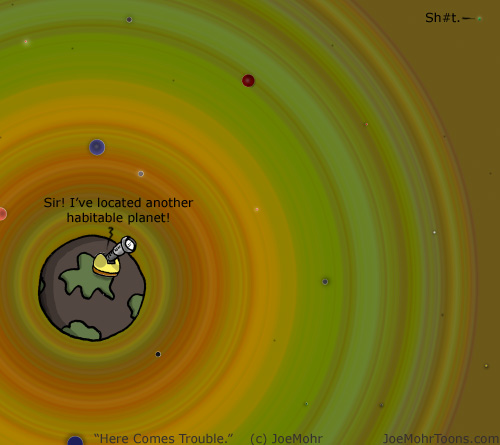Of Black Holes & Quasars:
No Earth or space-based telescope has ever observed a black hole directly. This is because the extreme, gravitational field of a black hole generates a massive, encircling disc of dust and gas, called an accretion disc. Whenever a large object, like a star, gets sucked into the hole’s event horizon, a massive burst of energy results which causes the disc’s dust and gas to glow brighter.
This action is believed to be the power source of extremely luminous, powerful and distant objects known as quasars. Quasars — “quasi-stellar radio sources” — are thought to be the nuclei of certain types of massive galaxies, and thought to be surrounding supermassive black holes. That’s the theory and it has strong consensus in the astronomical community.
But there’s no way to know for sure what quasars really are (i.e., how they work) because, even though they can stretch 100 billion kilometers across, they are so distant that their structures can not be imaged accurately.
How to ‘Profile’ a Quasar:
But human ingenuity can do some pretty amazing things. Case in point: astronomers working with the indefatigable Hubble Space Telescope utilized a bit of an optical trick: they turn the telescope into a sort of ‘scanning microscope’ by exploiting an optical effect known as gravitational lensing.

As the name implies, the mass of certain stars is so great that it shapes or bends light around itself, allowing formerly blocked objects to be seen and magnified. Using close-by stars passing through the light path of the quasar amplified the light of that quasar; using different stars at different locations around the quasar, allowed astronomers to compile detailed, colored image lines running through the object’s accretion disc.
Combining these images over longer observation times allow the scientists to develop a ‘full color profile’ across the black hole’s accretion disc. This profile can reveal such features as composition, temperature and size. For example, using this technique they were able to determine that the disc is between 100 to 300 billion kilometers across.
According to scientists working on the project, the level of detail permitted by this technique is likened to studying a grain of sand on the surface of the moon while standing on Earth!
Quasars can be strong sources of radio (hence the name) and gamma ray emissions. Amongst the most luminous of known quasars, the rate of radiation of a single one of these can exceed the output of many average galaxies — the equivalent of one trillion suns.


